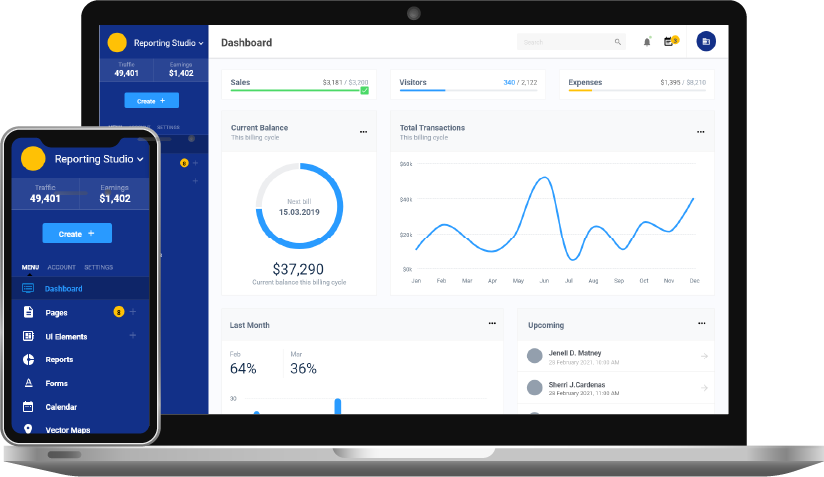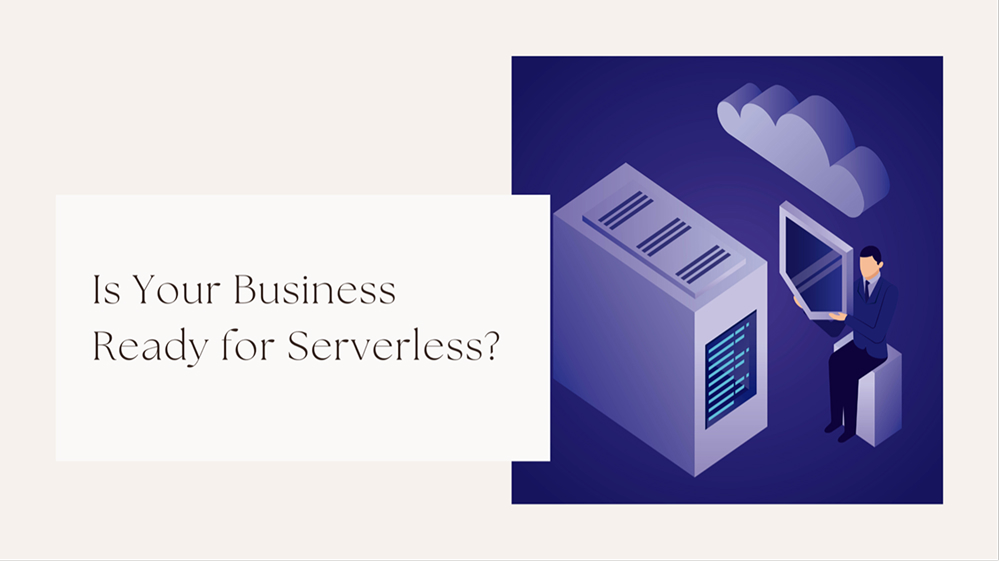table of content
- Introduction
- What are Cloud-Native Applications?
- Advantages of Cloud-Native Applications
- Scalability
- Adaptability
- Portability
- Reasons To Focus On Developing Cloud-Native Applications?
- Cloud-Native Applications vs Traditional Enterprise Applications
- How To Develop a Cloud-Native Application?
- Microservices
- Containers
- DevOps
- Continuous Delivery
- Cloud-Native Security
- Some Common Programming Languages and Tools Used For Cloud-Native App Development
- Tools for managing cloud-native applications
- Summing Up
Cloud-Native Applications Development – Unlocking The New Potentials

Introduction
Cloud-native applications offer a whole new level of scalability and flexibility in the cloud. This is across the whole of public and private cloud environments. This application development methodology prepares organizations for both the present day and the future. And, guess what? these applications are faster and above all, these are built for quicker response with instant update features. These applications also have higher quality and are very limited to risks, compared to any other approach.
With the help of this blog, the CodeStore team is trying to explain why cloud-native application development is gaining serious importance. Why Cloud-Native Applications are becoming more popular and how they can leverage the benefits for taking your business to the next level.
What are Cloud-Native Applications?
Applications that are purposely built to take advantage of limitless computing capabilities on a specific platform or device by utilizing microservices architecture.
Advantages of Cloud-Native Applications
Do you know most of the cloud-savvy companies have already started turning their head towards cloud-native application development?

Here are a few reasons why they are focusing on the development of cloud-native apps.
Scalability
Cloud-Native applications make use of software-defined infrastructures to get rid of hardware dependency. It utilizes commodity servers for horizontal scalability instead of using expensive processors, memory, and storage for existing servers.
Adaptability
These applications can evolve with the changing business needs without creating any dependencies that can affect the customers. For example, if a company decides to develop a mobile app, it can build the front end and use APIs to gain access to data without making any modifications in the backend code.
Portability
With the help of containers, developers can write code for applications that can run on all devices. This can also run without changing the code.
Reasons To Focus On Developing Cloud-Native Applications?
The cloud-native approach of software development helps
- These applications help in achieving faster time to market by speeding up application development and update.
- The use of cloud services helps reduce overall development costs.
- Offers a pay-as-you-go model for cloud services and all other resources.[
- Ensures availability and high performance of the application in case of overloads and complexity in user requests.
So, Moving forward, let’s look at the difference between cloud-native applications and Traditional enterprise applications.
Cloud-Native Applications vs Traditional Enterprise Applications
| Parameters | Cloud-Native Apps | Traditional Enterprise Apps |
| Development Time | Conform to a framework that eventually maximizes flexibility. | Takes a lot of time to get developed. These are usually developed and then released as a big package. |
| Release Cycle | Ensures a faster release pace for an update-specific bug. Moreover, This can be traced to a particular microservice within a specific container. | The amount of time spent searching the bug’s source and then working on the fix results in a delay in response to user queries. |
| OS Dependency | Developers utilize the platforms as a means to abstract away the dependencies. | Has a dependency between the OS and moreover, the application resulting in complex migration and scalability. |
| Cost-Effective | This is simple, pay for what you use and with no downtime for work process execution. | Have to create and do a complete setup of the data storage and for all other services. |
| Development Process Transition | With the help of the right people, processes, and tools a very smooth and swift application code is transferred to production. | Finished application code is managed by the operations team in the production environment that slows the processes. |
| Security | Offers the capability to access from anywhere across the globe while making it easy to use. | Here the stored data can be accessed by anyone with the help of server access. Moreover, One can easily view and use the data stored, and the application on the cloud. |
| Delivery Approach | Here, continuous delivery ensures that individual software releases are rapid and moreover, this offers organizations a better feedback loop to better respond to the customer needs. | Waterfall development results in the release of the software after every week or month. Even though the components of release are already causing delays in responding to the customer needs. |
How To Develop a Cloud-Native Application?
This requires a rethinking of the approach for organizations while developing and operating apps to suit the application delivery and also align the architecture-specific as listed below
Microservices
An architectural approach to developing applications as a collection of small services where each of them implements business capabilities as a standalone process and communicates via HTTP APIs or messaging. Therefore, Each such microservice, as a part of the automated system, helps deploy, upgrade and scale the same app by enabling frequent updates to live applications without impacting the performance.
Containers
These offer efficiency with great speed over standard virtual machines. Making it an ideal compute vehicle for deploying individual microservices because of its low overhead on creating and destroying containers and high package density in a single virtual machine. We use an open-source container orchestration system like Kubernetes to drive organizational operations with efficiency and speed.
DevOps
DevOps helps in creating collaborative culture between software developers and IT professionals. Moreover, this also delivers high-quality software that solves customer challenges.
Continuous Delivery
Automation plays an important role within the Continuous Integration / Continuous Delivery pipeline and in Agile and DevOps. Moreover, With CI/CD in DevOps, software development teams can focus on meeting business requirements, code quality, and security faster.
Above all, Continuous Delivery offers automation to move incremental software changes into production, constantly. It helps deliver software more frequently with less risk and faster feedback response.
Cloud-Native Security
This type of security offers smart ways to reduce risks in the enterprise by repairing vulnerable software, frequently repave servers, and above all, this rotates user credentials.
Above all, with CodeStore Technologies, you can expect a team of highly skilled and experienced developers to help migrate your legacy applications onto cloud-native architecture. Moreover, We help automate routine processes and provide exposure to our DevOps practices. This drives faster time-to-market
Some Common Programming Languages and Tools Used For Cloud-Native App Development
Practically any programming language can be used for the development of cloud-native apps, but it completely depends on the tech stacks supported by your cloud provider and especially your own requirements. For microservices architecture, the support for reactive programming, parallel algorithms, concurrency, asynchronous, and above all, composability is important to consider.
Moreover, We have an experienced team of developers for some of the best ever cloud-supported tech stacks like Java, Python, dot Net, and Node.js.
Above all, each of them has its share of individual strengths that boosts the project.
Tools for managing cloud-native applications
AWS, MS Azure
Platforms offering cloud applications development services.
Kubernetes
This enables container orchestration to deploy and moreover these also manage containers.
Prometheus
A monitoring tool that records time-series data for distributed Microservices.
Fluentd
Helps collect and share log data for sending out log aggregations to tools such as AWS Cloud.
ELK Stack
This offers complete monitoring of the overall development process.
Istio
Enables universal traffic management and moreover, provides security for complex development.
Reporting Studio
This is our own open-source analytics visualization tool that is used to create charts, graphs, and alerts for the web when connected to supported data sources.

At CodeStore Technologies, with the help of our custom cloud application development services, above all, we utilize the above listed and best-in-class tools and technologies to develop the most efficient and flexible cloud-native application for your business.
Summing Up
Enterprises around the world are migrating towards the cloud very rapidly because of the endless opportunities it can offer to users. After reading this article, It is clear that cloud-native application – data management, application development, deployment, and providing services is comparatively easy. All of this over a pay-per-use costing model.
Moreover, If you need a helping hand to support covering all aspects of cloud-native development, CodeStore Technologies can be a great extension for your team. Above all, we ensure providing the best and certified workforce for helping to develop the most efficient and flexible cloud-native applications for your organization.



